GOAT WILLOW or PUSSY WILLOW : Salix caprea
Also known as great sallow.
The official name of goat willow is a bit confusing. Perhaps it has something to do with the amount of hairy fluff that its catkins drop. The alternate name of pussy willow is pobably better known. The Woodland Trust suggests that it refers to the catkins looking like cats' paws. Anyone with a cat that sheds profusely in early summer may see a more appropriate association. Wiki thinks the catkins look like small cats. "Pussy willow" can refer to many of the smaller species of the genus Salix (willows and sallows) when their furry catkins are young in early spring. Our tree here is more specifically a "goat willow".
Mature trees grow to 10m and can live for 300 years.
Unlike most willows which have elongated leaves, the goat willow has oval leaves slightly pointed at their ends. They are hairless above, but with a felty coating of fine grey hairs underneath. Another feature to note is the way the pointed ends twist slightly to one side.
The goat willow is dioecious, meaning male and female flowers grow on separate trees. In early spring, the catkins develop. The male catkins are grey, stout and oval and become yellow when ripe with pollen. The female catkins longer and green.
Once pollinated by wind the female catkins develop into woolly seeds. These can be seen on the trees in distinctive fluffy areas amongst the leaves. In due course they drop off and can become quite a sight along paths.
They can be confused with the grey willow. Hybridisation with them is known.
The flowering shoots of pussy willow are used both in Europe and America for spring religious decoration on Palm Sunday, as a replacement for palm branches, which do not grow that far north.
It enters literature too. Amongst others, Pussy Willow, a children's book by Margaret Wise Brown tells the story of a grey "pussycat not much bigger than a pussywillow". And in popular music, we find references to it by Jethro Tull and the Red Hot Chili Peppers.
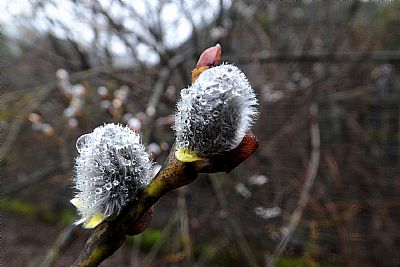
Early signs of catkins in mid-February, wet from a light morning rain.
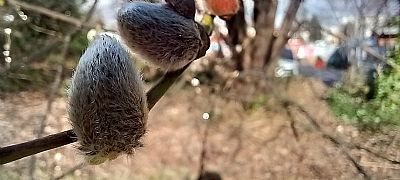
Late February.
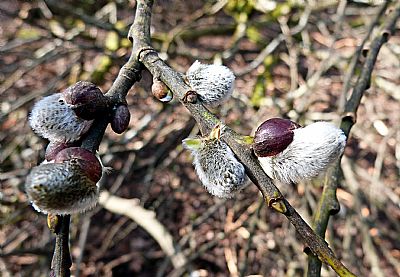
This picture was taken very early in April. The berry-like husks are still in evidence and the flowers are emerging still fluffy. Interestingly, these were found on a tree that had fallen during the January high winds. Still defiant and optimistic. Evidence of how certain trees persist, creating the opportunities of new life as the parent plant succumbs.
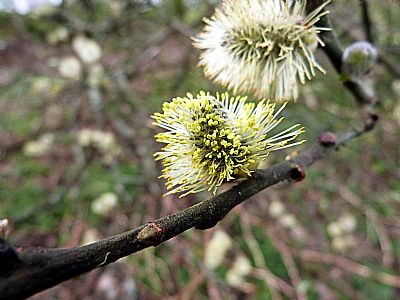
While most flowers on this same tree are still emerging, some have entered the next stage.
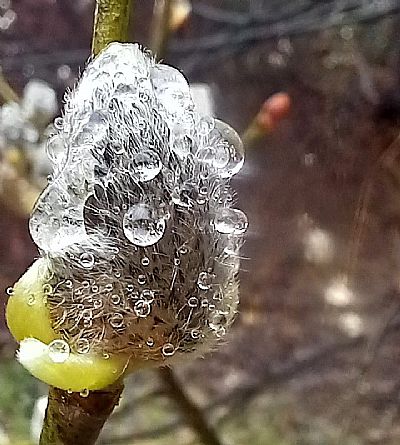
March.

These become flowers. Yellow at first. March.
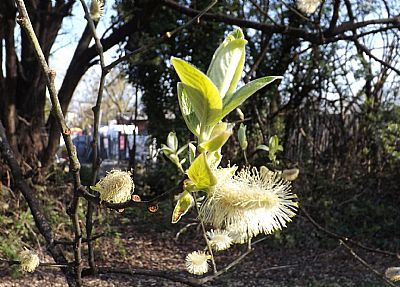
The catkins have gone through several stages by April. Quite white now and elonggated Also note the new leaves which have a silvery felt underside.
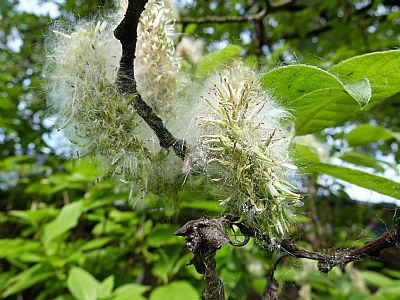
Reaching the messy stage in May.
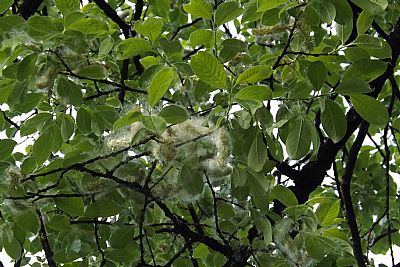
Some branches of a goat willow.
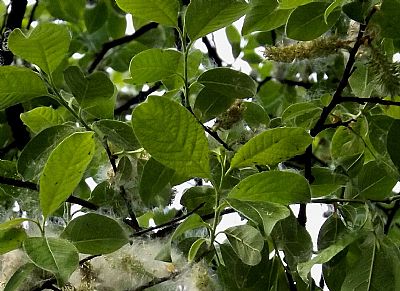
A close up of the same area. A ripe catkin at the top right and catkins turned into fluffy masses to the bottom. Note the oval leaves with the points slightly twisted to one side.

Quite a fluffy mess along the Leven towpath.
WIKIPEDIA : https://en.wikipedia.org/wiki/Pussy_willow
WILDLIFE TRUST : https://www.woodlandtrust.org.uk/trees-woods-and-wildlife/british-trees/a-z-of-british-trees/goat-willow/
WOODLAND TRUST : https://www.woodlandtrust.org.uk/trees-woods-and-wildlife/british-trees/a-z-of-british-trees/goat-willow/

